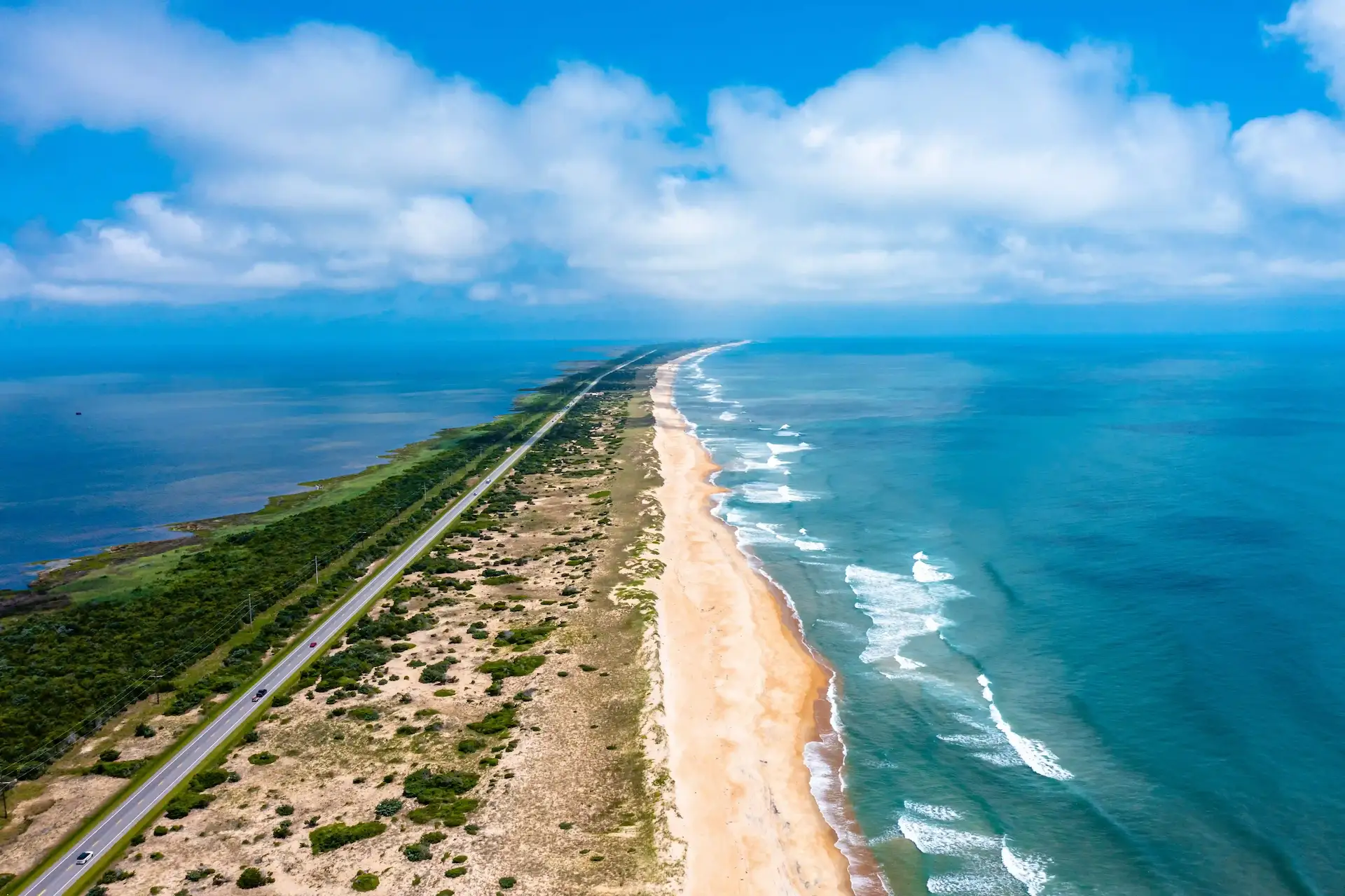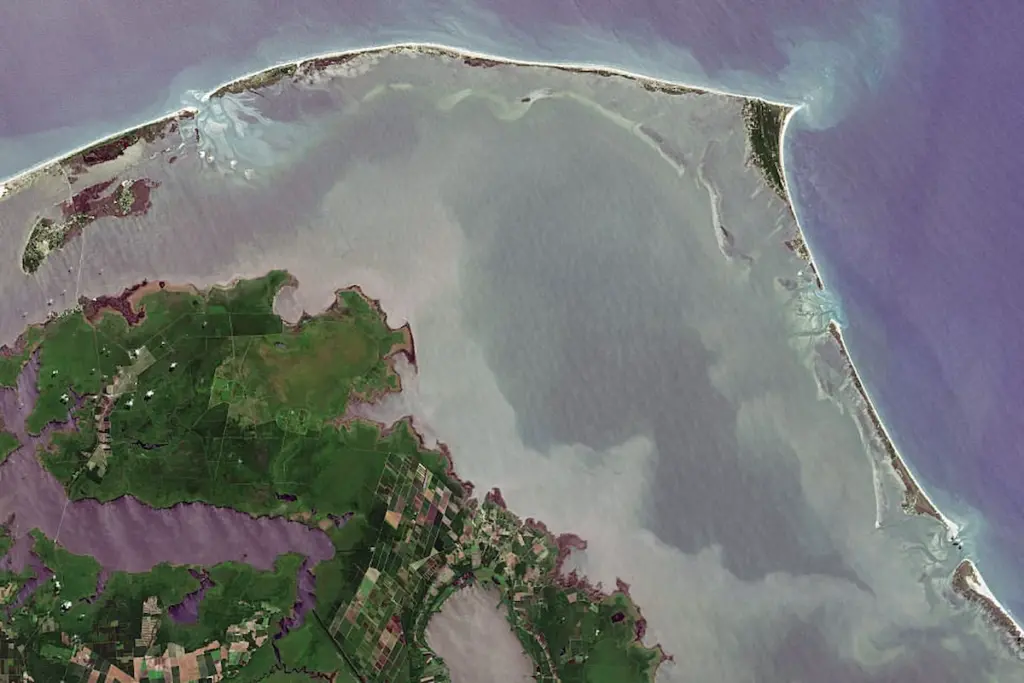What is a Barrier Island?
Barrier islands like the Outer Banks are important … and at risk

Barrier islands, such as North Carolina’s Outer Banks, are thin stretches of land that run parallel to the shoreline and can change form based on wind and wave energy. They are usually separated from mainland areas by bodies of water such as sounds, creeks, bays and tidal basins and often support habitats like marshes and tidal flats. Barrier islands serve as frontline protection against threats such as major weather events and storm surges, and the calmer soundside or bayside waters often provide a safe haven and ideal nursery environments for many coastal wildlife species.
There are a number of barrier islands in the United States. In fact, more than a third of North America’s coastline is bordered by barrier islands, all documented through geological history. Florida’s Miami Beach and New York’s Long Island are another two very famous barrier islands here. The formation of barrier islands depends on large amounts of sediment being deposited on a regular basis over long periods of time. If you take a look at North America’s Atlantic coast, you’ll spot a trend very quickly: There are an incredible number of rivers on this coast carrying sediment downstream.
Get Ocean Updates in Your Inbox
Sign up with your email and never miss an update.
At the end of the last Ice Age about 15,000 years ago, melting glaciers caused rapid sedimentary movement downstream toward the continental shelf. Sea levels were quickly rising, and the rapid waters kept sediment from settling. Once the rate of sea-level rise began to slow and stabilize, the deposited sediment from the post-Ice Age era began to build up in coastal areas. Thus, barrier islands began to take shape.
There are some areas where you won’t find barrier islands, however, and the Pacific Coast of the continental United States is one of them. Barrier islands require two key environmental elements to develop: flat terrain near the coast and low tectonic activity (as in places where earthquakes are rare). Due to the mountainous terrain of the West Coast and the much higher levels of tectonic activity, you won’t find any barrier islands on this side of the country.
It’s important to note that barrier islands are not permanent geological features. Just as they develop and grow over time thanks to shifting tides and changing weather patterns, they are also prone to consistent erosion. Under some circumstances, these islands are incredibly fragile and can even disappear completely. Sometimes, this happens naturally over time; other times, this rate of change is dramatically expedited by human activities. Today, the dangerous combination of climate change and human-induced erosion marks a major threat to barrier-island existence.

First, sediment changes from ship traffic and infrastructure projects like damming and dredging can greatly impact barrier-island ecosystems because they decrease the amount of stable sediment surrounding the islands that is key to keeping them strong. These human-induced or exacerbated issues alone cause significant threats to the existence of these special coastal features. However, when combined with climate change impacts like rising sea levels, the intensity of these threats becomes magnified.
Without the protection of barrier islands, both native wildlife and coastal communities face even more climate-related threats, such as increased storm surges and major flooding events. Fortunately, the National Oceanographic and Atmospheric Administration (NOAA) has numerous coastal resilience projects that help protect, preserve and fortify fragile ecosystems like barrier islands. However, NOAA’s funding can limit its ability to perform this critical work. Take action with Ocean Conservancy today and make sure Congress fully funds NOAA!